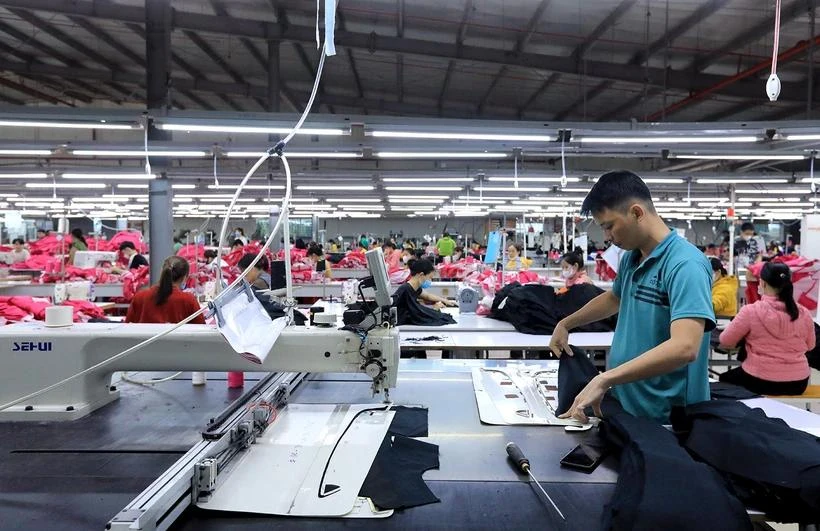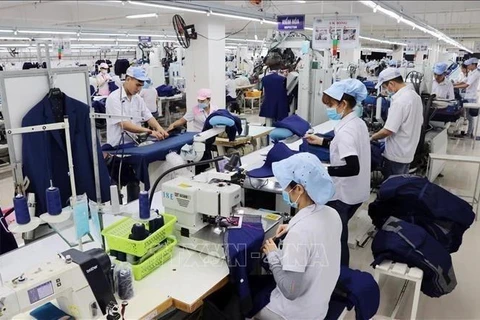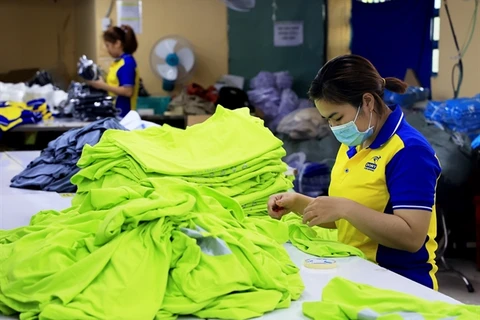
Hanoi (VNA) – The year 2024 is forecast to continue witnessing complex and unpredictable developments with latent risks from the global political and economic environment, which will negatively affect the prospect of Vietnam’s growth recovery.
However, textile and garment exports still brought home about 16.28 billion USD in the first half of 2024, up 3.1% year on year.
Cao Huu Hieu, General Director of the Vietnam National Textile and Garment Group (Vinatex), said that the textile and garment panorama of 2024 has brighter prospects than last year. Notably, the income of the entire staff at Vinatex has remained unchanged from 2023. This is an encouraging sign as businesses have enough manpower to fulfill orders to retain customers.
He noted that 2023 was the first time in 30 years the textile and garment sector had recorded a decrease of 11.3% in export revenue, down to 39.6 billion USD. Vinatex was also unable to avoid the impact of this trend in the garment sector.
The market has warmed up since the start of 2024. Compared to the same period in 2023, the number of orders has increased, but prices have yet to go up. After 2023, suppliers have formed a new level of prices that producers have to follow, but this is still a good sign amid difficulties, he said.
Hieu pointed out that at present, most garment companies of Vinatex have gained enough orders to be fulfilled until September-October, and they are also negotiating orders for the following months.
Yarn companies also saw many encouraging results in H1. However, they still suffered from losses though the losses nosedived 70-80%, data show.
This year, there are fewer difficulties in terms of orders for garment firms. Nevertheless, price-related difficulties since 2022 and 2023 remain, the Vinatex executive said, adding that prices of some products have dropped 20% and even 50%.
A new price level was formed in 2022-2023, but it does not mean manufacturers have to accept losses. Instead, based on that price level, businesses need to improve their governance to promote productivity and reduce expenses to ensure efficiency, according to him.
Hieu went on to say that businesses want to raise prices for the orders they are negotiating for Q4 this year, but many factors are likely to affect production activities in the year-end months. For example, logistics costs grew continuously from the end of Q4 2023 to H1 this year while the Red Sea conflict has caused imported cotton batches to be delivered later than scheduled.

He said that it is hard to make predictions for year-end months due to volatile market changes, especially geo-political conflicts in many regions worldwide. However, based on what has been achieved, this year’s textile and garment exports may grow 8-10% compared to 2023.
Vinatex posted a year-on-year revenue increase of 5% in H1, which the General Director considered a more positive sign from the market, especially for yarn companies.
Hieu expressed his hope that production and business results will be better than expected in H2./.






















